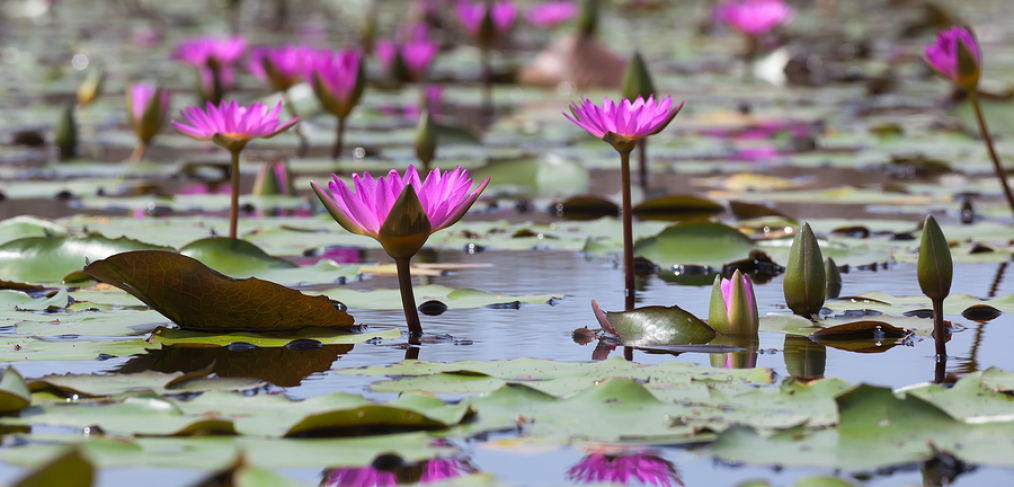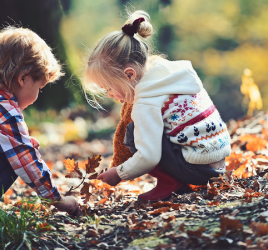
Wetlands: The Threats and What You Need to Know

Pink water lilies (lotuses) blooming in a pond in Mai Po marshland – wetlands
Our wetlands are being threatened.
In Michigan, it seems that everyone is trying to get a lakefront property. Not many people outside of Michigan know this, but Michigan is truly a land of many lakes.
Technically, most of these are ponds, as many of them are less than 20 acres in size. A friend of mine recently purchased a home with a private “lake” shared with four other families. In reality, this is a spring-fed pond connected to another fish-filled pond. It’s amazing because it supports a huge diversity of birds and wildlife.
The property all around the lake, upon inspection, is wooded but very boggy, prompting them to put a call into the Department of Natural Resources in Michigan.
It’s technically three types of wetlands: pond, marsh, and prairie fen. My friends are looking forward to helping to protect their wetlands over the coming years.
The Importance of Wetlands
Hong Kong’s vast Mai Po Marshes are a prime example of the importance of wetlands and why if we as a global network ignore the threat to our wetlands we will continue to lose the many bird and fish species that rely on these biomes for their homes.
In 1995, Mai Po was designated as a wetland of international importance under the Ramsar Convention. The marshland was being constantly threatened by housing and land development, infilling, pollution from sewage, new industry, livestock waste, and more. It houses over 55,000 migrating birds – including the Saunder’s gull and one-quarter of the world’s black-faced spoonbill population. Mai Po is just one example of the wetlands under threat all over the world.
The Long History of Wetlands
There is a long history of wetlands being used for agricultural purposes. The Nile river delta has long been thought of as the cradle of civilization for this reason. Many scholars believe that farmers successfully used the fertile land in the delta as farmland for millennia, relying upon annual floods to add silt to the plains.
Wetland-loving crops were planted and harvested, creating a stable and stationary food source upon which to build a civilization. Hence, rich the Egyptian culture of which we see echoes today.
Globally, there are many different types of wetlands. These include marshes, estuaries, mudflats, mires, ponds, fens, pocosins, swamps, deltas, coral reefs, billabongs, lagoons, shallow seas, bogs, lakes and floodplains.
In addition, human-made wetlands include fish and shrimp ponds, farm ponds, irrigated agricultural land, salt pans, reservoirs, gravel pits, sewage farms, and canals also count toward the earth’s wetland area.
Wetlands in Danger
Wetlands are highly productive. They supply the world with ⅔ of its fish. They are also in danger. Half of the world’s wetlands have disappeared since 1900. There are several main types of wetland found in the world:
Coastal Wetlands
Coastal wetlands are areas between land and sea which are uninterrupted by rivers. These can be shorelands, beaches, mangroves and coral reefs. They each play an important part in preventing erosion, providing habitat for breeding fish and sheltering the inland areas from storms. Particularly mangroves and coral reefs.
Mangrove swamps are found in sheltered tropical coastal areas. Mangrove trees grow with their roots partially submerged in water. The roots trap sediment to prevent it from going back out to sea. The trees protect the land from storms and calm the water, which can then be used as a breeding ground for fish. About 70% of the world’s coastlines are mangrove swamps.
Shallow Lakes & Ponds
These wetlands are permanent or semi-permanent and have little flow. Vernal ponds, spring pools, salt lakes, volcanic crater lakes – all of these are grouped in the same category.
Bogs & Pocosins
The main feature of a bog is its nutrient poor and acidic soil and water quality. Accordingly, bogs can’t be used for agriculture, forestry or development and are often the last wetland available to wildlife needing shelter. Among the animals that use bogs as their main habitat are moose, black bear, lynx, snowshoe hare and mink.
Additionally, they host some of the more interesting types of plants like the carnivorous pitcher plant – which gets its nutrients from insects instead of the poor soil. A pocosin is an evergreen shrub bog particular to the high areas of a flat and water-logged land area.
Marshes, Swamps & Fens
“Palustrine wetlands” comprise almost half of the wetlands all over the world. Marsh is a broad category which is host to the largest biological diversity of all the wetlands. Marshes form in depressions in the earth – around lakes, slow-flowing streams, and rivers. You will know a marsh when you see floating-leafed plants like water lilies and duckweed.
Marshes are further differentiated from bogs and fens in that they usually have standing water – from 1-3 inches. Marshes do the important work of slowing water drainage and controlling the flow from the rain into rivers, lakes, and streams. Marsh plants act as a slow water filter to clean water destined for streams and rivers.
Estuaries
The estuary is where a river meets the sea. These are some of the most interesting and original places on the planet because of the mix of fresh water and salt water. Deltas, tidal mudflats, and salt marshes are all technically estuaries. Additionally, mudflats and seagrass beds are the breeding grounds for many species of insects, birds, fish, and turtles, to name a few.
Wetlands Threats
Here is a short list of some of the things threatening wetlands today:
- Conversion of wetlands for commercial development
- Drainage schemes
- Extraction of minerals and peat
- Overfishing
- Tourism
- Siltation
- Pesticide discharges from intensive agriculture
- Toxic pollutants from industrial waste
- Construction of dams and dikes in an attempt at flood protection
Takeaway
Such rapid destruction of the earth’s wetlands can be disheartening if you feel there’s nothing you can do to stop it. However, there are a few ways you can do your part to help stop the destruction of wetlands.
- Pay attention to your water consumption and save water when you can.
- Take part in a global campaign to help conserve wetlands.
- Share information with the rest of the world by sharing this or any other article on the conservation of wetlands.
- Build a natural pool on your property.
Over to You
What are ways you can think of to preserve our wetlands?

